Goan cuisine is a tantalizing fusion of flavors, reflecting the state's vibrant cultural tapestry. Nestled on India's west coast, Goa boasts a culinary heritage shaped by Portuguese influence and local traditions. Delectable seafood dishes like Fish Curry Rice and Prawn Balchão showcase the coastal abundance. Spices, coconut, and kokum lend complexity to these dishes. Goan cuisine also embraces vibrant vegetarian options, such as Bebinca, a layered dessert. From fiery vindalos to aromatic xacutis, Goan cuisine is a celebration of diverse tastes and culinary craftsmanship, making it an essential experience for those seeking a journey through India's coastal culinary delights.
Chouriços (Chorizo)
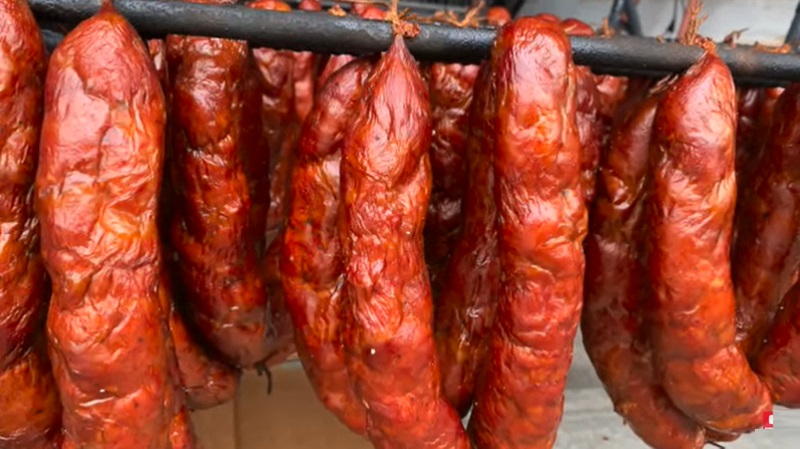
Goan cuisine, celebrated for its vibrant and savory offerings, features a standout delicacy known as Chouriços or Chorizo—a spicy sausage with roots tracing back to Portugal. This culinary gem seamlessly integrates into the fabric of Goan gastronomy, contributing its distinctive flavors to the region's rich tapestry.
Crafting the Chouriços involves meticulous preparation. The sausages undergo marination in a blend of aromatic spices—garlic, ginger, turmeric, and red chili powder. This infusion of flavors elevates their taste. Subsequently, the sausages are pan-fried or grilled, achieving a delectable combination of a thoroughly cooked interior and a crisp exterior.
Chouriços aren't merely a standalone delight; they often find a place as a complement or take center stage, paired with rice or bread. The intense, smoky essence of the sausages, coupled with the aromatic spice infusion, creates a tantalizing and fulfilling culinary experience. Furthermore, Chouriços play a pivotal role in various Goan culinary creations, like Goan sausages pulao or chorizo pao, infusing them with a distinct and spicy flair. In essence, the Chouriços embody the delightful fusion of Portuguese and Indian influences, contributing to the unique and delicious character of Goan cuisine.
Chamuças (Goan Samosa)
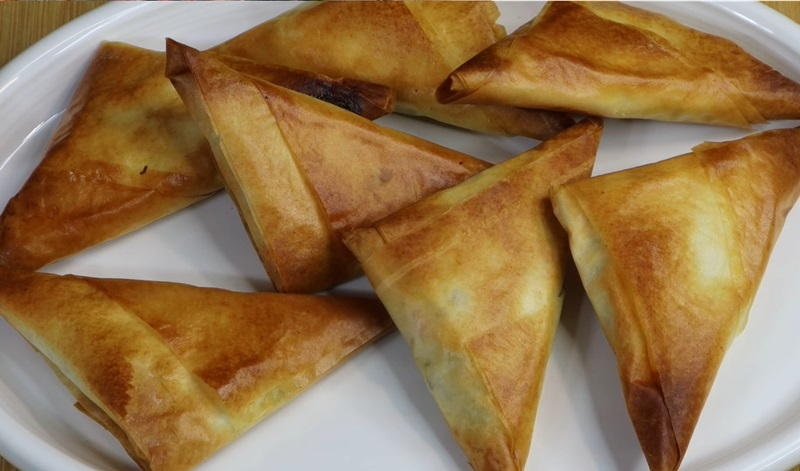
Chamuças, also recognized as Goan Samosas, stand out as a beloved snack within Goan culinary traditions. These delectable pastries embody a harmonious fusion of Indian and Portuguese influences, a testament to Goa's diverse and historical culinary journey.
The outer layer of chamuças boasts a thin, crispy pastry, crafted from a blend of all-purpose flour and water. The heart of this savory delight lies in its filling—a flavorful amalgamation of spiced potatoes, onions, peas, and occasionally minced meat. Infused with aromatic spices like cumin, coriander, turmeric, and chili powder, the filling carries a distinct Goan essence.
Upon preparation, the filling is carefully encased in the pastry and sealed into a triangular form before undergoing a deep-frying process that renders them golden and crispy. Served piping hot, chamuças find delightful companionship in tangy tamarind chutney or mint-coriander chutney. Widely embraced as a street food gem, chamuças shine as both an appetizer and a tea-time snack. The irresistible combination of flaky pastry and flavorful filling ensures that chamuças remain a culinary delight enjoyed by both locals and visitors, capturing the essence of Goa's gastronomic charm.
Vindaloo
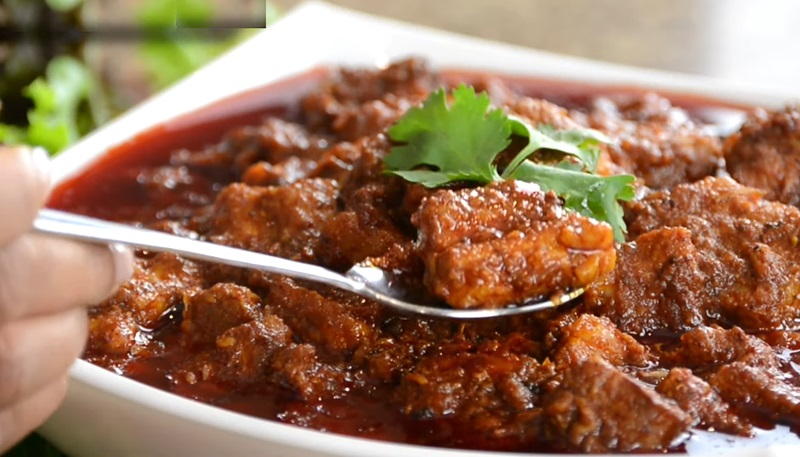
Vindaloo, a renowned Indian curry hailing from Goa, traces its origins to the Portuguese dish carne de vinha d'alhos. This globally recognized culinary gem has earned a place on the menus of curry houses and Indian restaurants worldwide, celebrated for its fiery and spicy profile. The traditional vindaloo recipe revolves around marinating pork in a distinctive blend of vinegar and garlic. This Goan adaptation took inspiration from the Portuguese practice of preserving raw ingredients in wooden barrels, layering pork and garlic soaked in red wine. While the Goan adaptation replaced red wine with palm vinegar and introduced spices, alternative versions feature prawns, chicken, beef, mutton, lamb, tofu and vegetables.
The British Indian incarnation of vindaloo involves marinating meat in a mixture of sugar, spices, fresh ginger, and vinegar. The meat is then cooked with an additional array of spices, resulting in a flavorful and robust dish. Vindaloo's journey from its Portuguese origins to becoming a beloved and easily pronounceable culinary delight showcases the dynamic fusion of flavors and cultural influences within the diverse landscape of Indian cuisine.
Feni
-1706509201.jpg)
Feni, an alcoholic beverage originating in Goa, India, comes in two main varieties: cashew feni and coconut feni. Distilleries also offer newer blends based on different ingredients. The small-batch distillation process preserves the delicate aromatics, congeners, and flavor elements of the juice, influencing the final character. The term "feni" is derived from the Sanskrit word phena (froth), believed to originate from the bubbles formed during shaking or pouring. Coconut feni likely preceded cashew feni, both following a similar process before the introduction of distillation by Europeans.
Coconut palms are abundant along the Konkan coast, while the cashew tree was introduced by the Portuguese. The history of fermented cashew beverages leading to feni's distilled spirit is somewhat ambiguous. Southern Goa's feni tends to have a higher alcohol content (43–45% abv) than its northern counterpart (42.8% abv). Feni can be served neat, over ice, or mixed in cocktails, often accompanied by lime, sugar, or syrup. Popular mixers include cola, tonic water, and lemonade. Feni's culinary applications include use in pork marinades and as a base for the iconic Vindaloo curry, showcasing its versatile role beyond traditional libations.
Bebinca
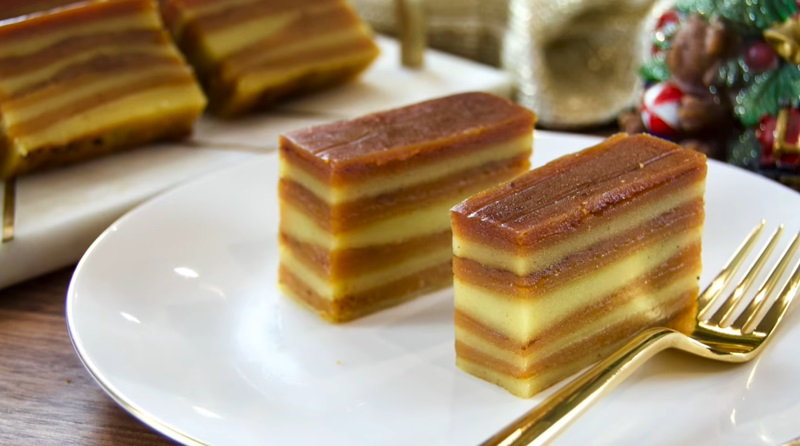
Bebinca, a cherished layer cake of Indo-Portuguese origin, holds a prominent place in the culinary heritage of Goa, India, reflecting the cultural amalgamation of the region's history. Traditionally featuring 7 to 16 layers, bakeries may adapt the recipe for convenience and taste. Although especially popular during the Christmas season, Bebinca's availability throughout the year aligns with Goa's vibrant tourism. Known for its longevity and freshness, it remains a sought-after treat. Preparing Bebinca demands a patient approach. The batter, a blend of flour, egg yolk, sugar, coconut milk and ghee undergoes a meticulous process. Spread thinly on a grill, the layers are delicately stacked, forming a visually appealing and delectable cake. To enhance its flavor, Bebinca may be garnished with nutmeg or adorned with slivered almonds.
Beyond its culinary significance, Bebinca's association with typhoon names in the northwestern Pacific Ocean, particularly in Macao, reflects its cultural resonance and enduring legacy beyond its delectable layers.
Dodol
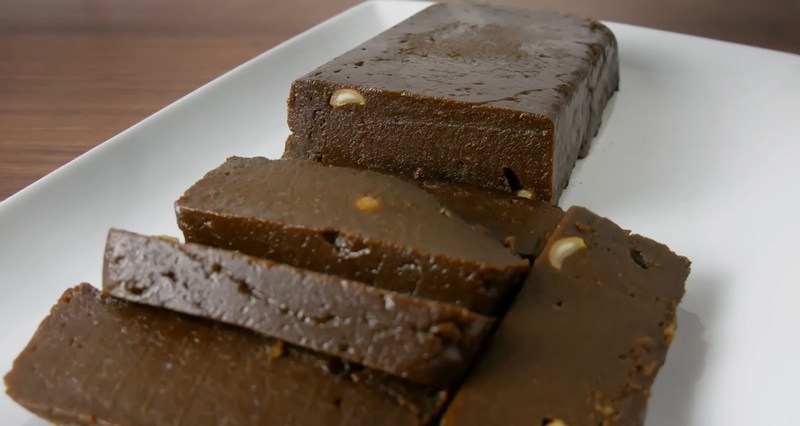
Dodol, a revered Goan sweet, takes center stage during festivities and special moments, captivating palates with its rich and opulent flavor profile. Crafted from humble ingredients, Dodol transforms coconut milk, jaggery, rice flour, and ghee into a culinary masterpiece.
The artistry of Dodol unfolds through a meticulous process. Coconut milk and jaggery dance together in a simmering embrace until they metamorphose into a velvety, caramel-like consistency. The gradual addition of rice flour, with a vigilant stir to banish any lumps, brings forth a symphony of flavors. Slow-cooked to perfection, Dodol emerges with a smooth, sticky texture, dressed in a deep brown hue.
The distinctive essence of Dodol lies in the harmonious marriage of jaggery's sweetness and the gentle nuttiness derived from coconut milk. To elevate its indulgence, Dodol welcomes a final touch—chopped nuts like cashews or almonds, contributing a delightful crunch to every bite.
Beyond its culinary prowess, Dodol transcends into a cultural icon in Goa, a dessert that fosters moments of togetherness. Shared among family and friends, this sumptuous treat, with its creamy allure, irresistibly satisfies the cravings of those with a penchant for sweetness.
Xacuti
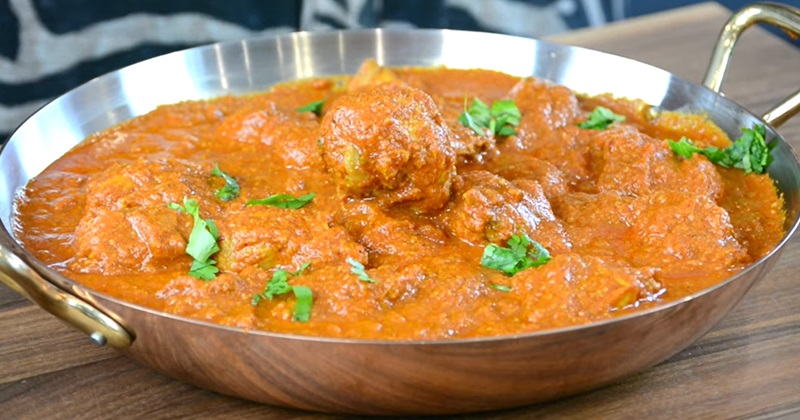
Xacuti, a luscious and aromatic curry, originates from the sun-soaked state of Goa, India, ingrained in the region's rich culinary tapestry. This distinctive dish, renowned for its intricate spice medley, unfolds a culinary narrative influenced by centuries of cultural interplay in Goan kitchens. With historical ties to Portuguese and Konkan traditions, Xacuti, deriving its name from the Portuguese term "chacuti," encapsulates Goa's diverse gastronomic heritage.
Crafting Xacuti demands a careful fusion of aromatic spices—poppy seeds, white poppy seeds, dried red chilies, coriander seeds, cumin, and fennel seeds—blended into a flavorful masala paste. This spice-infused paste becomes the heart of the dish, enveloping chicken, lamb, or fish alongside coconut, onions, and tamarind in a slow-cooked embrace, resulting in a velvety and fragrant curry.
Xacuti stands as a culinary marvel, celebrated for its nuanced flavors and the harmonious marriage of heat and richness. Best enjoyed with rice or traditional Goan bread, this curry serves as a delectable testament to Goa's dynamic culinary mosaic shaped by cultural exchanges and a history steeped in spice trade.
Patrodo (Patrode)
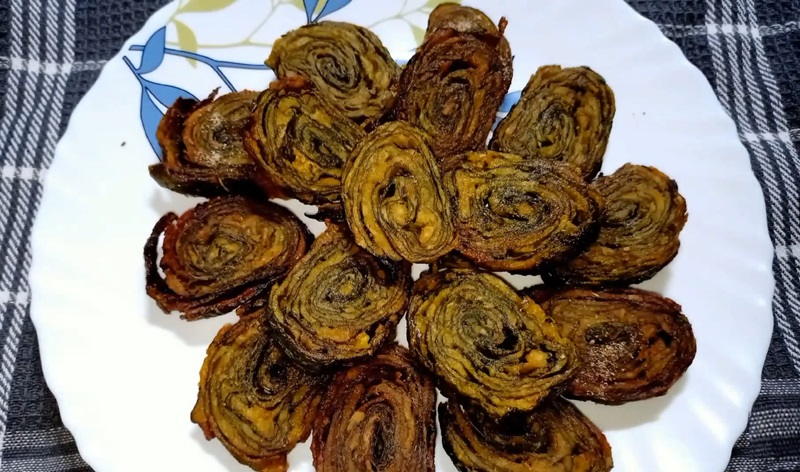
Patrode is a unique and delicious delicacy that is prepared using colocasia leaves, also known as taro leaves. The leaves are carefully cleaned and then a spicy and tangy filling is made using rice flour, tamarind pulp, jaggery, coconut, ginger, garlic, and a blend of aromatic spices. To prepare Patrode, a small portion of the filling is spread evenly on the colocasia leaf, and then it is rolled tightly into a cylindrical shape. These rolls are then steamed or deep-fried until cooked to perfection. The steaming or frying process helps to enhance the flavors of the filling, resulting in a mouthwatering dish. The final dish has a unique combination of flavors - the earthiness of the colocasia leaf, the spiciness of the filling, the tanginess from the tamarind, and the sweetness from the jaggery. It is often served as a snack or as a side dish with rice and lentils.
Patrode is not only bursting with flavors but also has several health benefits, as taro leaves are rich in vitamins, minerals, and dietary fiber. Patrode is a must-try dish for those who want to savor the authentic flavors of Goan cuisine.
Solkadhi
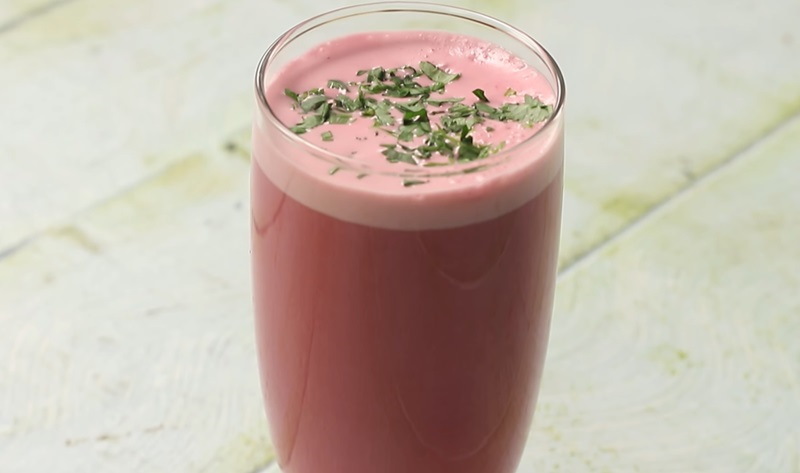
Solkadhi, a distinctive drink and appetizer originating from the Indian subcontinent, holds its roots in the Konkan regions, particularly popular in Goa and coastal Maharashtra. Typically enjoyed with rice or consumed after meals, this flavorful concoction is crafted from dried kokum skins and coconut milk, imparting a vibrant deep purple-pink hue through its anthocyanin pigments. The preparation involves blending the liquid extract of fresh coconut, known as coconut milk, with kokum or agal, enlivened by chili-garlic paste for both taste and probiotic richness and seasoned with a touch of salt.
This regional specialty not only captivates the palate with its unique combination of flavors but also serves as a refreshing and probiotic-infused beverage, making Solkadhi a cherished part of culinary traditions in the coastal regions.
Sarapatel
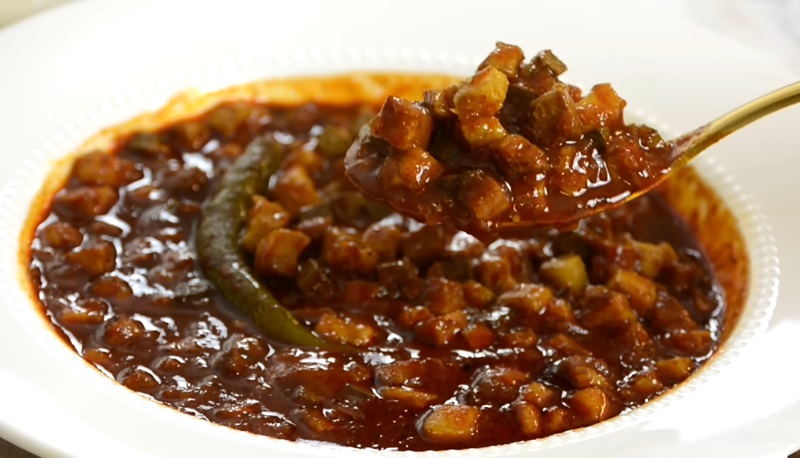
Sarapatel, a dish of Portuguese origin, has found a culinary home in the Konkan region, notably in Goa, Mangalore, and Bombay, once part of the Estado da Índia Portuguesa colony. The term 'Sarapatel,' denoting confusion, reflects the eclectic mix of ingredients, featuring pork meat and offal, including heart, liver, tongue, and occasionally pork blood, though the latter is now less common due to accessibility challenges. The meat undergoes parboiling, followed by dicing and sautéing before simmering in a spicy and vinegary sauce. Originating from African slaves in Brazil, Sarapatel made its way to India through the pork-loving Portuguese.
The Goan Christians and East Indians infused their own culinary flair, resulting in the diverse version available today. Regional variations include differences in spice levels, vinegar usage, meat size, and cooking techniques. Typically enjoyed with coconut bread and a sweet steamed rice in Goa and Mangalore, Sarapatel also pairs well with Pão, rice, or serves as a sandwich filling.
Cafreal (Frango à Cafreal)

Cafreal or Frango à Cafreal, a widely enjoyed spicy chicken dish, has become a culinary staple in the Indian state of Goa, formerly a part of the Estado da Índia Portuguesa. Originating from the Portuguese colonies in Africa, this flavorful preparation made its way into Goan cuisine through the influence of Portuguese settlers and African soldiers in their service. The dish's distinctive blend of flavors includes fresh coriander leaves, green chillies, ginger, cinnamon, onion, garlic, pepper, clove powder, chilli, mace, and vinegar or lime juice. Typically, chicken cafreal features whole chicken legs marinated in these spices and herbs, then shallow-fried to perfection. Served alongside potato wedges and lime wedges, it has become a popular choice in the bars and taverns of the state.
Believed to have originated in Portuguese colonies in Africa, particularly Mozambique, the term "À Cafreal" refers to the style of the Cafres, inhabitants of Southern Africa, suggesting a connection to the piri-piri chicken. Despite sharing similarities in some global contexts, chicken piri-piri and chicken cafreal differ significantly in Goa, not only in flavor but also in color, with the latter being distinctively green.
Sanna
-1706513712.jpg)
Sanna, a spongy steamed dumpling, stands as a culinary gem with deep roots in the Konkan region along the western coast of the Indian subcontinent. Its origins trace back to vibrant locales such as Goa, Damaon, Mangalore, Bombay, and Bassein (Vasai), garnering widespread admiration among diverse communities, including Goan Hindus, Goan Christians, Konkani migrants in places like Karachi, Karnataka, Kerala, Sindh, Gujarat, and the Kuparis of the Bombay East Indian community.
The artful preparation of Sanna involves a harmonious blend of red rice, black lentils, and coconut, with distinctive variations in fermentation methods. Hindus favor the use of urad dal, coconut water, and coconut milk, infusing the dumplings with a unique flavor profile. Catholic sannas, on the other hand, exhibit two variations: those crafted with coconut flower toddy and those using coconut palm sap-toddy, each offering a distinct taste. Sannas hold a special place in Konkani celebrations, frequently gracing tables during notable occasions such as Ganesh Chaturthi and church feasts. This culinary tradition extends further with a sweet iteration, godachi sanna, where the dumplings are delicately sweetened with jaggery, adding another layer of indulgence to the cherished dish.
In essence, Sanna transcends its culinary role to become a symbol of cultural celebration, uniting communities in the Konkan region with each delectable and spongy bite.
Poee
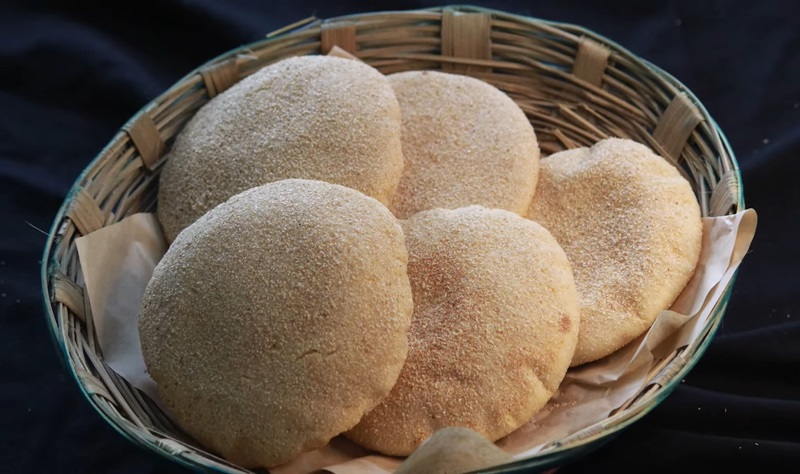
Poee, alternatively referred to as poie, stands as a leavened bread deeply ingrained in the rich culinary heritage of Goa, India. This delectable creation is artfully crafted by the esteemed traditional bakers known as "poders," who hold a revered position in Goa's gastronomic landscape. Poee has earned its place as a staple food in the region, reflecting not only the mastery of the poders but also the cultural significance it carries within the Goan culinary tradition. Resembling pita bread, poee boasts a round shape, a soft texture, and a distinctive pocket. While coconut palm wine or toddy was historically employed for fermentation, commercial production now utilizes yeast. The bread is a balanced blend of half-maida and half-whole wheat flour.
A crucial element of Goan cuisine, bread was introduced by the Portuguese in the early 17th century, making Goa the sole state in India with a legacy of traditional leavened breads, as noted by Chef Hussain Shahzad. Vogue India acknowledged the rising popularity of poee beyond Goa in 2018. The dish "ross poee," featuring an omelet, xacuti, and poee, exemplifies a typical item in Goan home cooking.
Goa Sausage
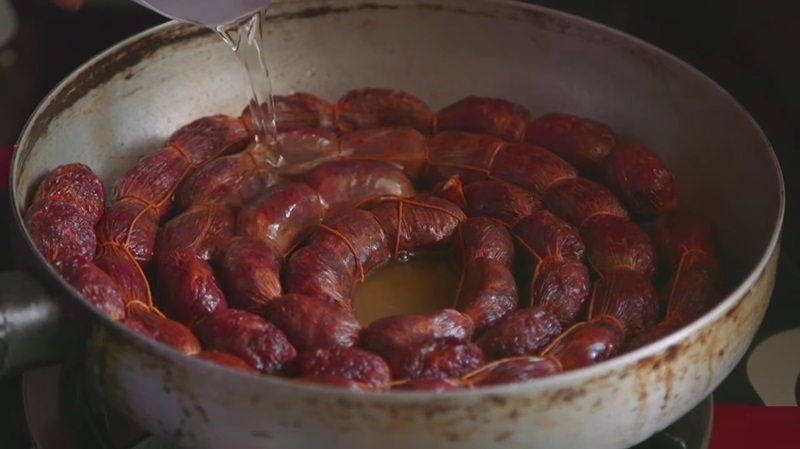
The Goa sausage, also known as Choris, epitomizes the fusion of Indo-Portuguese culinary traditions in Goa, a region that once belonged to the Portuguese State of India. Originating from the Portuguese Chouriço sausage, the Goa sausage was adapted to the local environment where the humid conditions posed challenges for preserving European-style sausages. To overcome this, chunks of boneless pork are salted, sun-dried, and then pickled in a mixture of vinegar, alcohol, and a chili-spice blend before being encased in pig gut.
Rooted in Iberian traditions and linked to the Spanish Chorizo, both undergoing a process called pimenton, the Goa sausage begins with sun-dried, heavily salted pork. A flavorful mix of spices, ground hot chili peppers, palm vinegar, and Feni, a local liquor, is added. The resulting sausages are either sun-dried or slowly smoked after being filled into casings.
Typically served in curry, boiled or fried, the Goa sausage complements white rice, baked potatoes, or is sometimes paired with a boiled egg. Another preparation involves boiling slices with onions and vinegar. Traditionally crafted during the dry season from December to March, these sausages are consumed more abundantly in the monsoon/wet season when fish is less available.
Kuswar

Kuswar, also known as Kuswad, signifies a delightful assortment of festive sweets and snacks crafted and shared by Christians in the Konkan region of the Indian subcontinent during the Christmas season. This cherished tradition is deeply ingrained in the culinary heritage of the Goan Catholic community in Goa and the Mangalorean Catholic community in Karnataka. Comprising as many as 22 unique and time-honored recipes, Kuswar epitomizes the distinctive flavor of Christmas celebrations in these regions.
The term Kuswad, derived from the Indo-Portuguese term "consoada" representing the Christmas Eve dinner, embodies the spirit of "sharing" among the Bombay East Indian Catholics in their native Maharashtri Konkani dialects. The delightful array of Kuswar includes nevryos, Christmas cakes, marzipan, duck roasts, kidyos, and more.
In the Goan Catholic tradition, Kuswar features a variety of delectable treats like:
- Perada: Guava cheese made from savory green guavas and sugar.
- Kidyo or Kulkuls: Semolina-based confections flavored with coconut and cardamom.
- Neuero or Neuries: Dough mixed with cashews, raisins, coconut, and cardamom, then deep-fried.
- Bebik (Bebinca): Layered baked dessert with coconut milk, flour, sugar, and ghee.
- Doce (Doce de Grao): Sweet made using coconut and chickpeas.
- Marzipan: Confection made primarily of sugar and almond meal.
- Bolinhas: Small cakes or coconut cookies made with grated sugar, semolina, coconut, butter, and egg yolks, flavored with cardamom.
- Nankatais: Snowball-like sweets made from sugar, butter, and flour, flavored with vanilla and cardamom.
- Baath: Moist, rich coconut tart with pastry lattice work, flavored with currants and cardamom.
- Kormolas: Sweet coconut pastries shaped like flower buds.
- Pinarg (Pinaca): Cutlet-like sweets made from crushed rice and jaggery.
- Mango Miskut: Confection made from mango pulp and sugar.
- Tuelinnas (Tuelinnas de Coco): Sweets made from coconut.
- Dodol: A type of jaggery and rice pudding.
These diverse and scrumptious offerings collectively contribute to the joyous and flavorful celebration of Christmas in Goa and Mangalore, forming an integral part of the festive tradition.
Ros Omelette
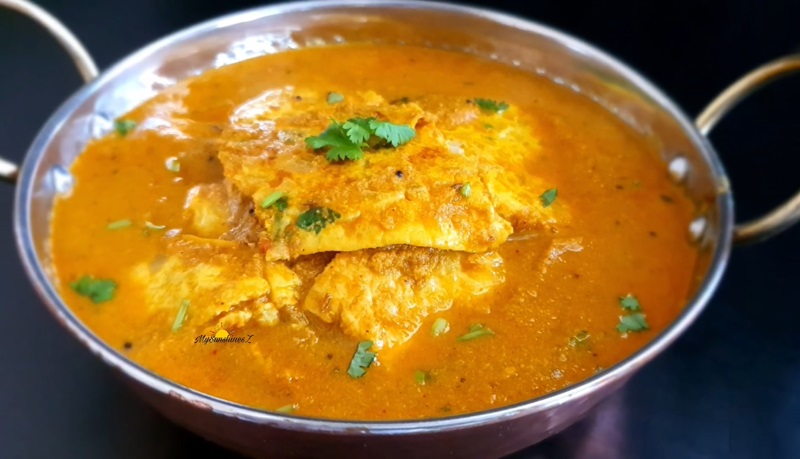
Ros omelette, also known as ras omelette, is a popular snack and street food in Goan cuisine, showcasing the vibrant flavors of India. The term "ros" translates to "gravy" in Konkani, and this dish features a spicy chicken or chickpea gravy, reminiscent of the xacuti style commonly found in Goan Catholic cooking. In instances where it's not a xacuti, the spicy gravy is prepared by Goan Hindus, comprising curry leaves, scraped coconut, black mustard seeds, onions, and an array of spices, often incorporating ingredients like mushrooms or cauliflower.
The omelette itself is a delightful blend of eggs, finely chopped green chili peppers, herbs, fresh green coriander, salt and onions (or shallots), allowing for various creative variations. The ros is prepared separately, and the hot gravy is generously poured over the freshly fried omelette. Typically enjoyed with Goan bread (Paõ), this culinary delight is a hallmark of Goan street food culture.
Traditionally, Ros omelette is a staple among food carts lining the streets of Goa's towns. These carts begin serving early in the evening and continue delighting customers well into the midnight hours. Many restaurants also feature this dish on their menus. For an enhanced experience, Ros omelette is best served with chopped onions and a splash of lime juice, elevating the flavors of this delectable street food.
Patoleo
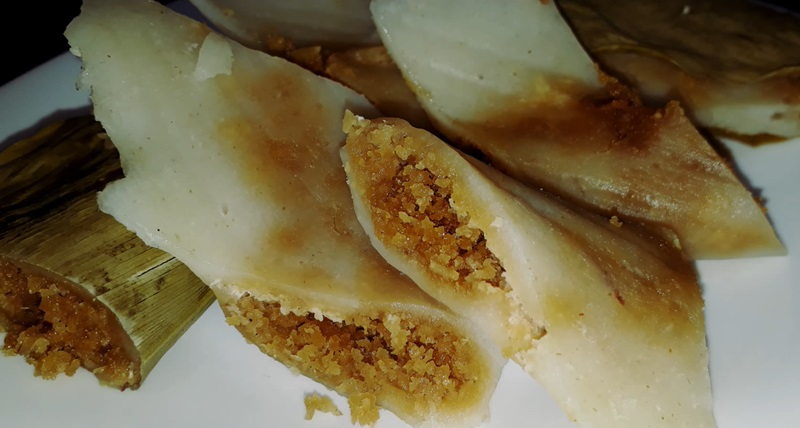
Patoleo is a traditional Goan dish that holds a special place in Goan cuisine. It is a steamed sweet dish that is made with a unique combination of rice, jaggery, and coconut. The dish is popularly prepared during the festive season of Ganesh Chaturthi. To make Patoleo, a mixture of freshly grated coconut and jaggery is mixed together and spread on a turmeric leaf. The leaf is then folded and steamed, giving the dish its distinct flavor and aroma. The use of turmeric leaf adds a subtle earthy taste to the dish, enhancing its overall appeal. The combination of rice, jaggery, and coconut gives Patoleo a rich and sweet flavor. It has a soft and melt-in-your-mouth texture that is truly delightful. The dish is often enjoyed as a breakfast or snack option, and it pairs well with a cup of hot tea or coffee.
Patoleo extends beyond being merely a delectable treat; it carries profound cultural significance within the traditions of Goa. It is often offered as prasad (offering) to Lord Ganesha during Ganesh Chaturthi celebrations. This sweet dish truly reflects the vibrant and diverse culinary heritage of Goa.
Urrak
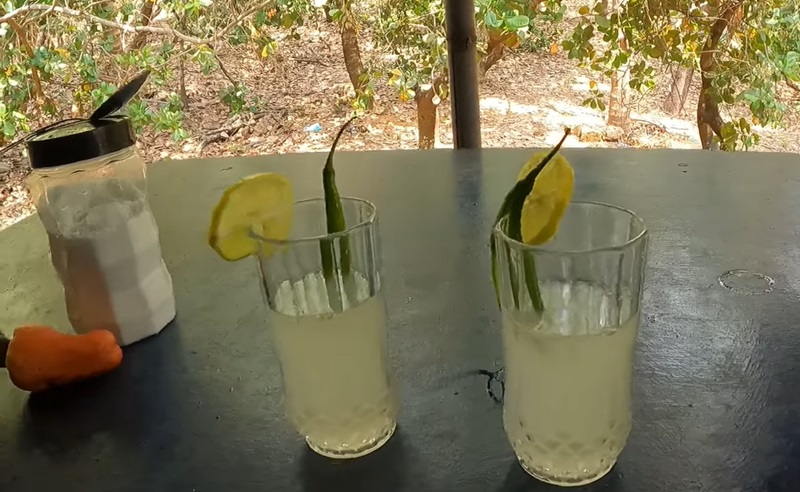
Annually, as the first rays of summer grace the Indian state of Goa, a cult-favorite alcoholic elixir known as Urrak emerges, capturing the essence of local traditions. This libation, celebrated in the state's numerous pubs and taverns, distinguishes itself from the well-known Feni, another popular spirit hailing from Goa. While Feni undergoes a meticulous double distillation process derived from fermented ripened cashew apple juice, Urrak takes shape in the initial phase of single distillation, concluded in early spring. Urrak, potentially containing sediments of the cashew apple, boasts a notably brief shelf life, urging consumption in its freshest form post-extraction, typically with an alcohol content ranging between 10-15%.
In contrast, Feni, a refined product from the same juice, undergoes a second distillation, resulting in a higher alcohol content of approximately 40%-45%. Feni also enjoys a lengthier shelf life compared to its Urrak counterpart. This annual ritual not only highlights the craftsmanship of local distillers but also becomes a vibrant symbol of Goa's spirited cultural tapestry.
Shrimp Curry (Prawn Curry)
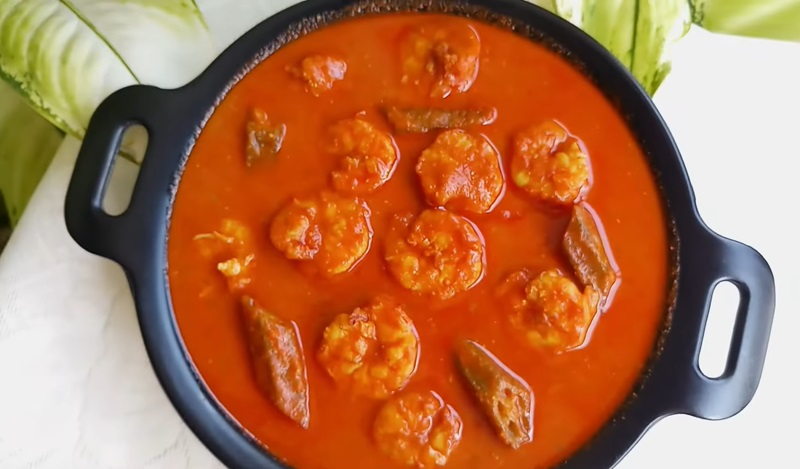
Goan cuisine stands out for its vibrant and distinctive flavor profile, characterized by a harmonious blend of spices. A shining example of this richness is the Shrimp Curry, a beloved dish synonymous with the culinary tapestry of Goa. Featuring locally sourced shrimp, known as prawn, this curry is renowned for its preparation in a luscious, yellow-hued sauce. The robust flavor profile is achieved through the infusion of ingredients like turmeric, coriander, cumin, grated coconut, chili, onion, vinegar, garlic, sugar, tamarind, and salt. The dish is garnished with fresh coriander leaves, which adds a burst of freshness.
The combination of tender shrimps in a flavorful and aromatic curry sauce creates a harmonious balance of flavors that is both spicy and tangy. Typically served alongside white rice, this dish encapsulates the essence of Goan culinary expertise. This dish is a true representation of Goan cuisine, showcasing the region's love for seafood and the art of spice blending.
Balchão
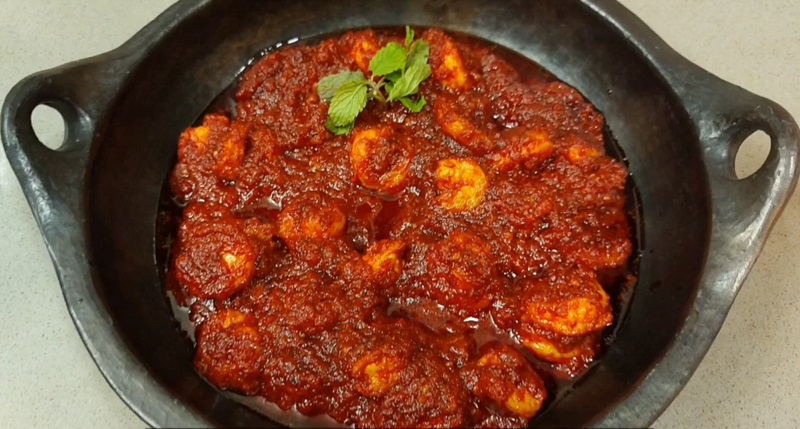
Balchão, also known as balichow, represents a flavorful Goan dish featuring fresh fried prawns immersed in a zesty and vinegary sauce. With its roots tracing back to Portuguese Goa, likely originating from Malacca, Balchão has become a culinary treasure influenced by historical exchanges. The dish, prepared with either fish, prawns, or pork, showcases a spicy and tangy tomato-chili sauce, resembling pickling techniques and offering the convenience of being made in advance without the need for reheating. Some variations even incorporate tamarind sauce for a unique twist.
Traditional Balchão employs a paste crafted from dried shrimp, locally known as galmbo in Konkani. The intricate blend of ingredients includes prawns, tomatoes, garlic paste, onions, ginger paste, cumin seed, dried red chilies, cinnamon, mustard seeds, cloves, sugar, salt, and vinegar. The prawns are meticulously prepared, and the spices are roasted before being ground into a paste with vinegar. In the cooking process, the prawns are fried until opaque, followed by the sautéing of onions and tomatoes until tender. The spice-vinegar paste is introduced, along with sugar and salt, resulting in a delectable concoction where the flavors meld seamlessly.
Typically served with plain hot boiled rice, Balchão maintains its savory appeal even when stored under refrigeration. This culinary delight encapsulates the essence of Goan gastronomy, showcasing a fusion of cultural influences and traditional expertise.
Kadboli

Kadboli, a cherished traditional savory snack originating from Konkan, India, holds a special place in regional culinary traditions. Crafted from a blend of urad, moong, chickpea, coupled with salt, rice flour, and flavorful additions like ajwain, cumin, or chili, Kadboli boasts a unique and delightful taste. This delectable treat shares similarities with its Karnataka counterpart known as kodubale, with the primary distinction lying in the composition—Kadboli incorporates a variety of flours, including urad, chickpea, and moong, while kodubale relies solely on split roasted chickpea (dalia) flour and rice.
Both versions showcase the artistry of traditional snack preparation, offering a crispy and savory experience that delights the taste buds, making them a popular choice for indulgence in Konkan and Karnataka alike.
Kidyo

Kidyo, also recognized as Kulkuls, is a delectable sweet delicacy integral to the festive goodies of Kuswar, prepared during the Christmas celebrations in Goa, Mangalore, and among the East Indian Community in Maharashtra. Crafted with a blend of maida flour, milk, and occasionally eggs, Kulkuls are skillfully shaped into small shell-like forms before being fried to golden perfection in ghee or oil.
This delightful treat embodies the spirit of Christmas, with its rich and enticing flavors. The unique combination of ingredients and the meticulous shaping process result in a sweet confection that not only adds sweetness to the festive spread but also symbolizes the joyous traditions shared among communities during the Christmas season in these regions.
Doce
-1706603386.jpg)
Doce, a beloved sweet, is a cherished treat in Goa, prepared for various occasions, especially during Christmas as part of the kuswar, a delightful assortment of sweets. Additionally, Doce holds a significant place in wedding celebrations. The term "doce," meaning sweet in Portuguese, reflects the colonial influence of Goa. The preparation involves a meticulous process of stirring boiled split Bengal gram, sugar and ground coconut paste over a low flame, with the addition of ghee during cooking. The resulting mixture is skillfully rolled out while still warm and then cut into squares or other appealing shapes.
This sweet delicacy not only adds sweetness to festive occasions but also represents the cultural amalgamation seen in Goa, blending traditional flavors with historical influences from Portuguese heritage.
Khatkhate Curry
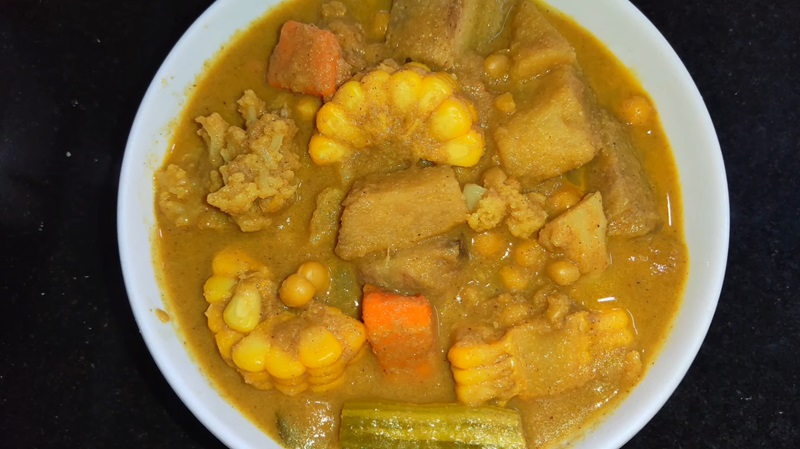
Khatkhate curry, an exotic mixed vegetable stew originating from Goan cuisine, is a distinguished gem within Indian culinary traditions. Typically reserved for special occasions like weddings and pujas, Khatkhate is a celebrated Goan and Konkani dish, known for its rich and flavorful profile. This unique curry boasts a symphony of at least five vegetables, including potato, radish, sweet potato, corn on the cob, pumpkins, carrots, and any seasonal additions. The complex blend of flavors is achieved through the incorporation of grated kokum, tamarind, coconut, dried red chili, jaggery, tirphala (Sichuan pepper), turmeric powder, and garam masala powder.
This harmonious medley creates a stew that not only reflects the vibrant diversity of Indian ingredients but also stands as a culinary centerpiece during festive and celebratory gatherings, showcasing the artistry of Goan gastronomy.
Varan Bhaat
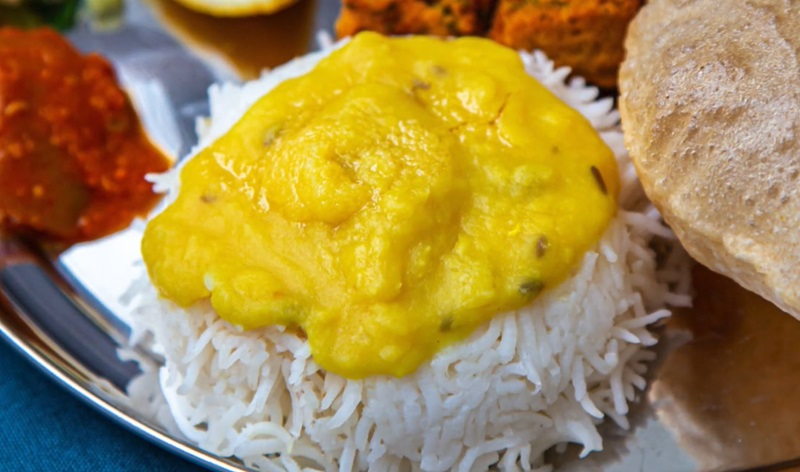
Varan Bhaat, a vegan delicacy, hails from Goan and Marathi cuisine, centering around the humble pigeon pea dal and rice as its primary ingredients. This simple yet satisfying dish showcases a minimalistic yet flavorful blend of cumin seeds, turmeric powder, asafoetida, salt, and jaggery, contributing to its distinct taste. As a staple in these regional cuisines, Varan Bhaat highlights the essence of comfort and nourishment, emphasizing the importance of wholesome and straightforward ingredients.
Whether enjoyed as a standalone meal or paired with complementary dishes, this traditional preparation captures the essence of Indian culinary traditions, celebrating the harmony of flavors derived from the earthy richness of pigeon pea dal and the comforting simplicity of rice.
Goan Cucumber Cake (Tavsoli)
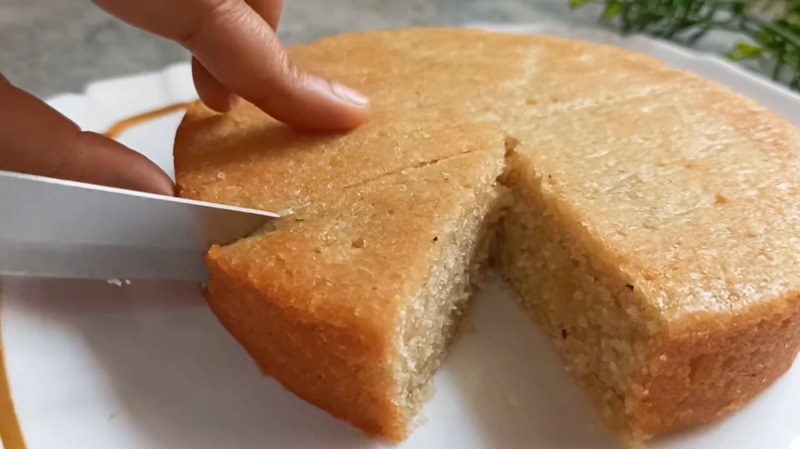
Goan cuisine is known for its vibrant flavors and rich culinary heritage. One unique dish that stands out is the Cucumber Cake, also known as Tavsoli. This delightful sweet treat is a fusion of Portuguese and Goan influences, resulting in a harmonious combination of flavors. To make the Cucumber Cake, grated cucumber is mixed with semolina, sugar, coconut, and a hint of cardamom. The mixture is then poured into a greased baking dish and baked until golden brown. The result is a moist and fragrant cake with a subtle hint of cucumber flavor. The Cucumber Cake is often enjoyed as a dessert or a tea-time snack. It pairs perfectly with a hot cup of chai or coffee. The cake has a light and refreshing taste, making it an ideal treat for hot summer days. In addition to its unique flavor, the Cucumber Cake is also known for its health benefits. Cucumbers are low in calories and high in water content, making this cake a guilt-free indulgence.
The Goan Cucumber Cake is a delightful and refreshing dessert that highlights the diverse flavors of Goan cuisine. It is a must-try for anyone looking to explore the culinary delights of Goa.
Crab Curry
-1706612962.jpg)
Crab Curry, a quintessential Indo-Portuguese culinary treasure, hails from the coastal realms of Goa, Daman, and Diu—regions that once constituted the Portuguese State of India (Estado da Índia). This delectable dish, an embodiment of cultural fusion, has also found its flavorful niche in Mozambique, echoing the culinary traditions brought by the Goan diaspora.
True to its name, Crab Curry revolves around the succulent bounty of crab, a coastal delicacy historically abundant along the shores of Goa. This dish encapsulates the essence of Indo-Portuguese gastronomy, marrying the vibrant spices and flavors that characterize both culinary heritages.
The curry is a harmonious blend of locally sourced crabs immersed in a tantalizing mix of spices, often featuring aromatic elements like garlic, onion, and piri piri, all elevated by the rich and velvety infusion of coconut milk. Traditionally enjoyed with steaming white rice, Crab Curry stands as a savory testament to the enduring legacy of Portuguese influence on Goan cuisine, transcending borders to enchant palates in Mozambique as a cherished culinary legacy of the Goan community.
Nevryo

Nevryo, a cherished Indian sweet dumpling, emerges as a culinary delight prominently savored in the vibrant state of Goa, Dakshina Kannada and Udupi districts of Karnataka, especially during the festive season preceding Christmas. This delectable treat also graces the tables during Hindu celebrations such as Diwali and Ganesh Chaturthi. The heart of Nevryo lies in its intricate preparation, where a delightful amalgamation of grated coconut, poppy seeds, green cardamom, sugar, and the rich crunch of cashew nuts or almonds is encased within a tender dough, creating a tantalizing symphony of flavors and textures. These flavor-packed dumplings are then lovingly fried to a golden hue in oil, resulting in a treat that resonates with festive sweetness.
Often drawing comparisons to a gujia filled with coconut and jaggery, Nevryo stands as a testament to the artistry of regional culinary traditions, bringing joy and indulgence to the celebratory moments of life in Goa and Karnataka.
Canja de Goa (Goan Soup)
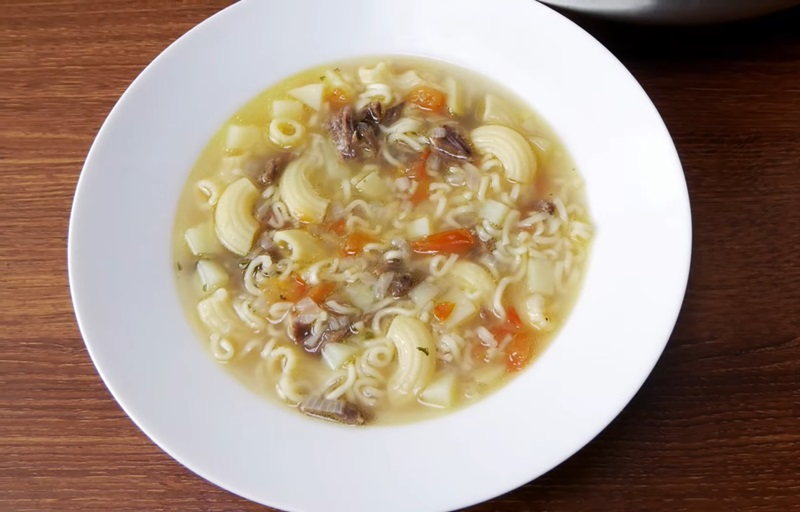
Canja de Goa, a hallmark of Indo-Portuguese gastronomy, embodies the rich culinary tapestry of Goa, Daman, and Diu, regions that once thrived as part of Portuguese India. This traditional soup, influenced by Portuguese culinary traditions, masterfully blends local elements to create a soul-warming dish. A symphony of flavors unfolds as local sausage, onion, chicken, rice, water, garlic, and salt dance together in harmony, simmering to perfection in a saucepan or pressure cooker. The crowning touch is the addition of a chicken bone extract, elevating the soup with depth and richness.
Historically, Canja de Goa held a special place, crafted with care for women giving birth in family homes. A symbol of nurturing and nourishment, it was often accompanied by a thoughtful offering of a bottle of port wine and six chickens, believed to be fortifying for both new mothers and convalescents. Served around 11 am, this soup finds companionship with remnants of the previous day's curry, sweet mango chutney, and salted fish, creating a delightful mid-morning repast. Beyond its culinary prowess, Canja de Goa serves as a vessel of cultural heritage, connecting generations through its timeless flavors and traditions.
Dhondas
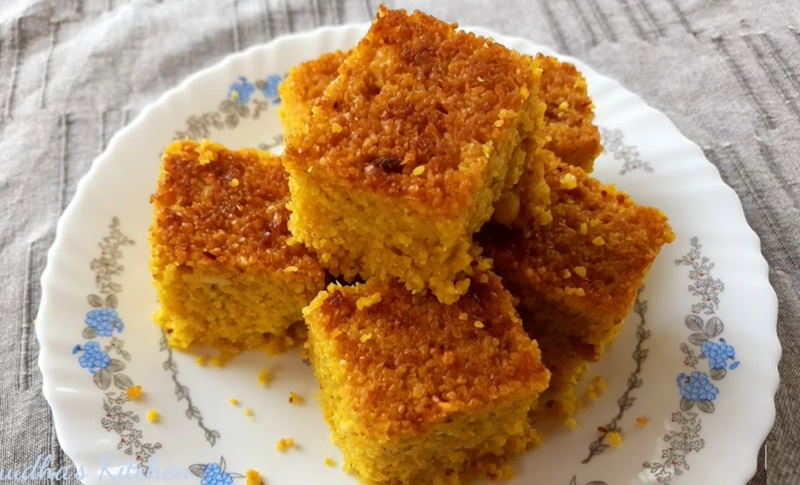
Dhonas, a delightful Indian sweet hailing from the region of Goa in West India, captures the essence of traditional culinary craftsmanship. This delectable treat is crafted using a combination of jackfruit or cucumber, rava (semolina), coconut, and jaggery.
The process of making Dhonas involves blending the grated or finely chopped jackfruit or cucumber with rava, grated coconut, and the natural sweetness of jaggery. This harmonious blend of ingredients results in a batter that is then carefully steamed or baked to perfection. The steaming or baking process allows the flavors to meld and infuse, creating a unique texture and taste that defines Dhonas.
Known for its distinctive sweetness and the aromatic richness of jackfruit or the refreshing notes of cucumber, Dhonas stands out as a beloved sweet in Goan cuisine. Its preparation is often associated with festive occasions and celebratory moments, where the delightful combination of fruity goodness, coconut, and the earthy sweetness of jaggery creates a symphony of flavors that lingers on the taste buds. Dhonas not only represents the cultural richness of Goa but also serves as a testament to the artistry embedded in the region's culinary heritage.
Godshem
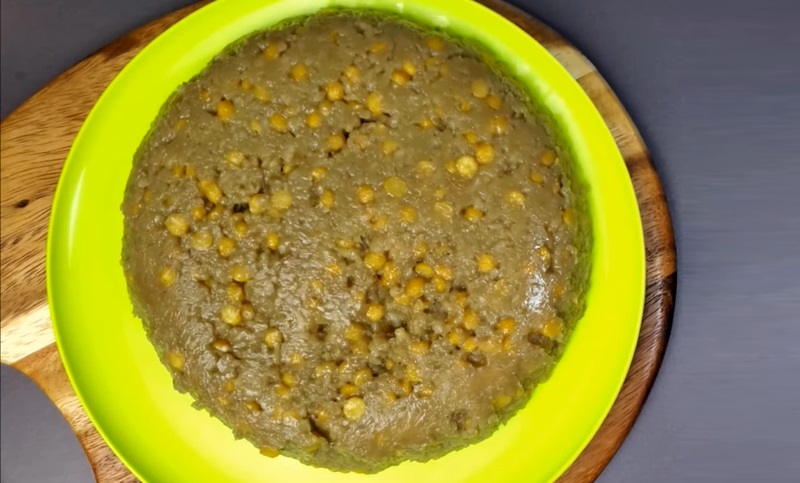
Godshem, rooted in the Goan Konkani language, translates to "pudding" or "sweetmeats," encapsulating a diverse array of delectable treats celebrated for their sweetness. These culinary delights, referred to as godshem, boast a rich variety of ingredients, showcasing the culinary tapestry of Goa.
Typically, godshem encompasses preparations crafted from a symphony of flavors, incorporating ingredients such as milk, coconut, rice, dal, jaggery, sugar, nuts, and ghee. The artistry of godshem extends to the inclusion of fruits and gourds, enhancing the sweetness and texture of these cherished desserts.
These sweet creations are a testament to Goa's cultural diversity and culinary creativity. The use of locally abundant ingredients and the fusion of various elements result in a wide spectrum of godshem offerings, each with its unique taste and character. Whether enjoyed during festive occasions, family gatherings, or everyday indulgences, godshem reflects the heart and soul of Goan sweets, bringing forth a symphony of flavors that captivates the palate and celebrates the rich culinary heritage of the region.
Modak
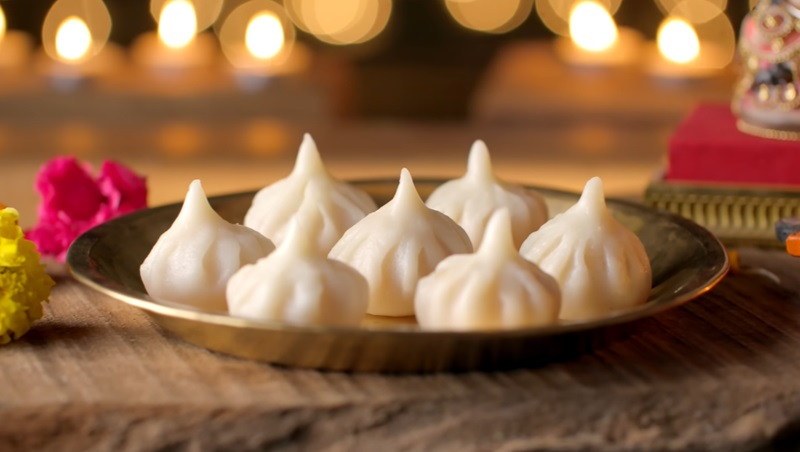
Modak or Modakam, a cherished Indian sweet, graces the culinary traditions of various Indian states and cultures. Embraced in Hindu and Buddhist rituals, it holds a special place as a favored offering to deities like Ganesha and the Buddha.
The heart of a modak reveals a sweet symphony—a luscious filling crafted from freshly grated coconut and jaggery. Enveloping this delectable core is the outer shell, a soft embrace crafted from a mixture of rice flour or wheat flour, often blended with khowa or maida flour.
This delightful treat manifests in two distinct varieties—fried and steamed. The steamed version, known as Ukadiche Modakam, carries its own allure. Served warm, this particular modak unveils its tender texture, inviting a delectable rendezvous with ghee.
Modak stands as more than a sweet indulgence; it encapsulates a cultural and spiritual significance. As a token of devotion, it finds its place in sacred rituals, symbolizing a blend of culinary mastery and reverence for the divine, echoing through the traditions of diverse Indian communities.






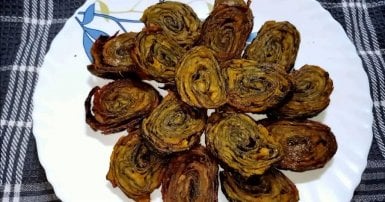
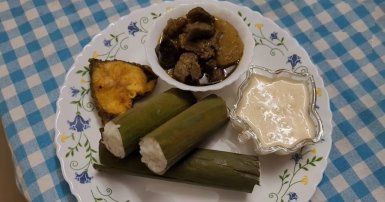
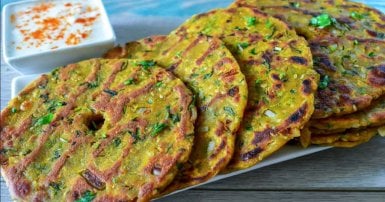
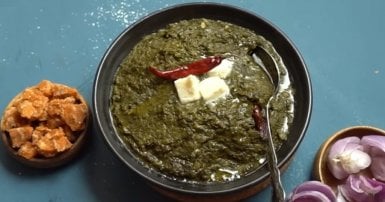
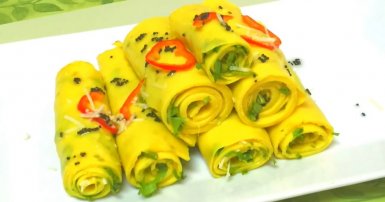
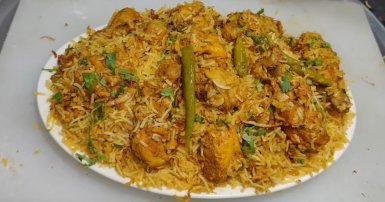

-1709813013.jpg)


